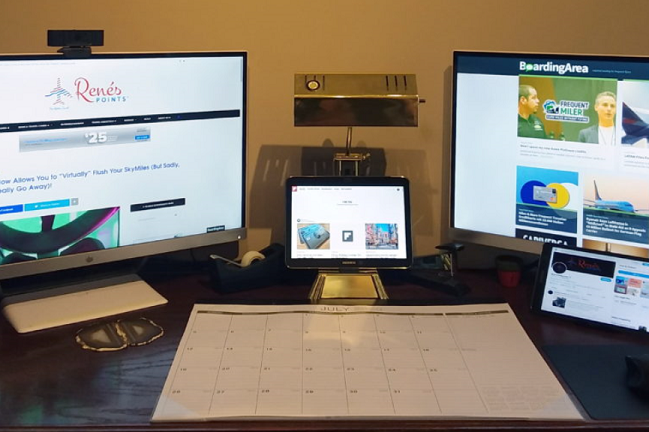e all have those pieces of writing that strike a chord within us each time we read them. You know what I’m talking about — those works that hit you in the feels with their is-the-author-inside-my-brain sentences.
Think about why you love your favourite authors and writers. What do they offer that you can’t get enough of?
For me, that’s how I feel whenever I read something by Stephen King or Sloane Crosley. Those two know how to transport readers smack-dab in the middle of a story.
When King writes about doom and gloom and apocalyptic nightmares, you feel it to your core.
When Crosley describes her New York City apartment, you’re sitting right there with her on her couch.
It’s their ability to immerse readers into their plotlines with strategic language that makes them exceptional writers.
In fact, that’s what inspired my newsletter/side project, Kat Loves Copy.
But how do they do it?
I’m going to share three ways to swiftly win over new readers using tried-and-true writing methods.
I’ll also show you how to apply these techniques to content marketing, whether it’s for your clients or your own work.
1. Write like you speak
The quickest way to lose your audience’s attention is to write in a way that sounds like a lecture from the economics teacher, played by Ben Stein, in Ferris Bueller’s Day Off.
And what do we say to writing that’s boring? Not today. Not tomorrow. Not ever.
The best kind of writing reads like a conversation between the author and the reader.
It’s engaging. It’s two-sided. Readers feel invested in what you have to say, just as they would if you were having the conversation in real life.
So, how do you achieve that to win new readers? Write as if you’re speaking with a friend or colleague. It may sound simple, and in many ways, it is, but it takes practice.
Let’s look at two different approaches to this writing technique:
First, think about how you might explain a topic to your friend:
- What words and phrases would you use?
- How would you position your opinion?
- What titbits or examples would you lean on to get your point across?
It may be helpful to make a list of these answers as you think of them so you can refer back as you write.
Once you start writing, locate where you can inject a bit of your personality and unique conversational tone that’s appropriate for your audience.
For example, instead of writing, “Here are six homemade dog treat recipes,” you could say, “Let’s look at six different homemade dog treat recipes because, let’s be honest, our four-legged friends deserve a variety of treats.”
Now, don’t get me wrong. The first example is completely fine. But the second example has more personality to it, which will likely be more engaging.
The second approach is to record yourself having a conversation with a colleague (or solo) about your topic of choice.
Listening to how you discuss, analyze, and present different sides of your argument can drive clear, yet descriptive, writing. Just be sure to cut unnecessary filler words.
I recommend recording a video call, so you can pick up on things like your body language and visual queues, if you’re speaking to someone else.
2. Use figurative and descriptive language to paint a picture
Want to transport your readers into your narrative instantly?
Dust off your grade school English textbook and revisit the figurative language chapter.
Let’s review the most widely used figures of speech:
Simile
A simile is when you compare two, unlike things using “like” or “as.”
For example, that puppy is as cute as a button.
Or, reading that blog post was like watching paint dry.
Comparisons help clarify your message and explain the familiar yet undefined. They’re a type of metaphor and excellent writing tools for when describing something with one word doesn’t quite feel enough.
Metaphor
According to the Merriam-Webster dictionary, a metaphor is “a figure of speech in which a word or phrase literally denoting one kind of object or idea is used in place of another to suggest a likeness or analogy between them.”
Metaphors are workhorses of description that intrigue your audience and help you win new readers. They allow you to paint a picture beyond corresponding adjectives and nouns.
“A freshly paved tar road enveloped the night sky” is far more vivid to read than “the night sky was dark,” right?
Hyperbole
With hyperbole, it seems as though the more exaggeration, the better. And hyperbole is just that — extreme exaggeration.
This figure of speech is for emphasis. However, it can provide added humor due to its over-the-top nature.
For example, “I have one million things on my to-do list” or “I’m so hungry I could eat a horse” are common uses of hyperbole.
Another example comes from Dick Clark during his Daytime Emmy Award acceptance speech:
“Please sit down because having produced nine million award shows, I know the producer’s up there saying, ‘Hurry, say thanks fast.’”
These figures of speech help convey ideas, points of view, and details. Just make sure you’re using them in a way that adds value to your readers and doesn’t distract.
3. Use empathy wisely in your writing
In the wise words of Sonia Simone:
“When you write content and copy, your most important job is that of Chief Empathy Officer for your audience.”
Connection. It all boils down to connection. You could craft the most eloquent, well-written article, but it won’t mean a single thing unless it connects with your reader.
Empathy is a powerful tool that fosters a bond between you and your readers.
It helps you figuratively reach out from the page and say:
“I understand your problem or concern, dear reader, now, let me show you what to do about it.”
From a content marketing perspective, this is true whether you’re trying to sell a product or get readers to take any form of action.
But first, you have to understand your audience enough to write something that resonates with them. If you don’t know your audience, you won’t know how to connect with them and naturally win new readers.
Consider these questions when researching your audience:
- What are their problems?
- What makes them tick?
- What’s the best way to communicate with them?
- What kind of solution should you offer?
Knowing your audience means knowing how to serve them, and that’s the cornerstone of high-quality content. However, the buck doesn’t stop there.
Once you know your audience, you have to write in a tone that matches. In other words — and I say this lovingly — read the room.
If your tone doesn’t match the topic, it will be difficult (if not nearly impossible) to create a bond with your reader.
To do this, put your research cap back on. The same principles apply when figuring out how to write in your own voice. What language does your audience use? What phrases or words do they resonate with?
Get inside the mind of your audience, figure out what they need, and deliver.
Prioritize your audience
Most people are short on time and attention. That means you only get one chance to capture their hearts and win new readers.
By injecting details and your personality into your writing, you’re able to open the door to connect with your readers and encourage them to stick with you.
But while your writing voice is important, make sure your readers can still find themselves in your words.
After all, it’s not about you. It’s about them.











:max_bytes(150000):strip_icc()/WordpressScreenshot-de1badf1c1c544a48fa134d62d72caad.jpg)
:max_bytes(150000):strip_icc()/Squarespacescreenshot-455227b729644ca0ab58a670e3a6a9cf.jpg)
:max_bytes(150000):strip_icc()/BloggerScreenshot-1f38dfe6b8874419ae66b618d89c1b07.jpg)
:max_bytes(150000):strip_icc()/Tumblrscreenshot-8a0580382d0b45fcb21b48d2c8e69c97.jpg)
:max_bytes(150000):strip_icc()/Mediumscreenshot-7b3af368012749e9859e120c2e4b7cb8.jpg)
:max_bytes(150000):strip_icc()/Wixscreenshots-c3f535357b7143df851f0689f75774c0.jpg)
:max_bytes(150000):strip_icc()/Ghostscreenshot-201c141a032c419eb8d76ed6eb2008fb.jpg)
:max_bytes(150000):strip_icc()/Weeblyscreenshot-8761d97121d247e7a67d15449060c56b.jpg)
:max_bytes(150000):strip_icc()/Hubpagesscreenshot-4c598edcf8aa4c978321804f4b8df77a.jpg)
:max_bytes(150000):strip_icc()/Typepadscreenshot-1742ceb11e074577a4459cdf0689defc.jpg)
